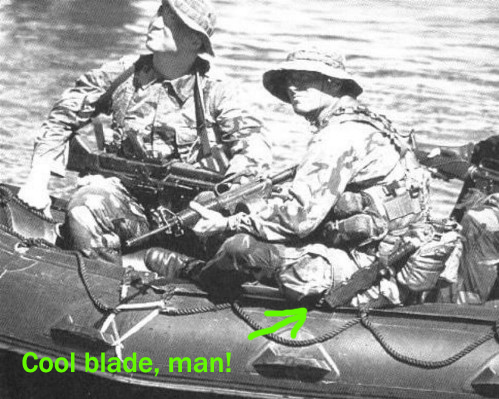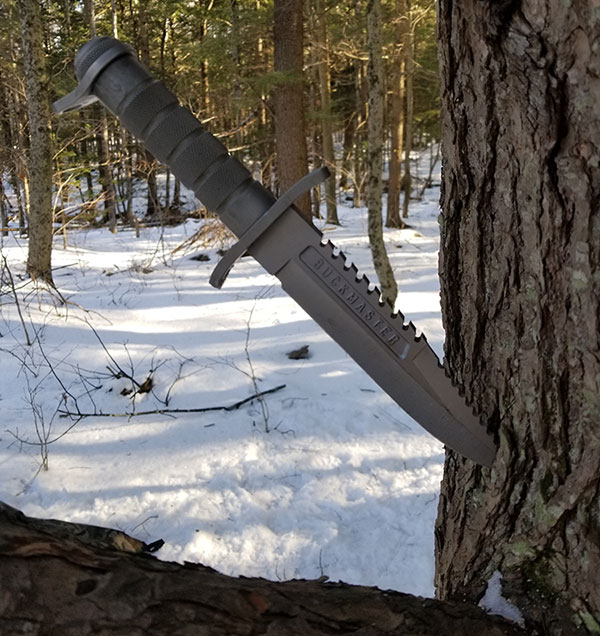When I was a kid, it must’ve been like 1985 or so, I went with my father to an Army Navy store in Bar Harbor, Maine. There, behind the glass counter, was a monster blade unlike any I’d ever seen. It was . . . . awesome. I mean, c’mon, it was the BuckMASTER! Master of all the Bucks! I was a kid, so it had an even bigger impact.
My father asked to see it (for my entertainment), and I remember the guy behind the counter touting this mother of all blades. Much to my childhood boy delight, my father let me hold it and I was in awe. It was expensive, and even if I’d had the money, there’s no way my father would’ve let me have it, so back behind the counter it went.
That memory stuck with me a long time, all the way until when I was old enough to make my own decisions, and (after saving money from lawn mowings, etc.) I went to a local hardware store that sold Buck knives and asked if I could order it. The guy, looking at young me, said, “Order a what?” He called the distributor, and he ordered it. The knife came a week later, I went to pick it up, he looked at me again, and said, “You be careful.”
I still own it:
The Buckmaster 184 Story
The Buckmaster (Buck 184) was developed by Buck at the request of Navy SEALs. It has a massive, high-end blade that’s 7 3/8″ long. The entire knife is exactly 1′. The points at the end unscrew. They are there so the knife can be used as an anchor for gear or as a makeshift grappling hook. The front saw edge on the back of the blade was designed for cutting wet rope.

Typical of most survival knives, the handle is hollowed out for water tight for storage of whatever components you want. Usually that’s a few matches, some fishing line, a few hooks, etc. Mine contains nothing but matches and something to strike them on.
The sheath is built out of a rugged, hard plastic. The knife was sold with optional nylon pouches that could be attached to the front for other gear. Mine is pictured with one pouch. The back of the sheath holds a built in sharpening stone. It has a quick-release belt loop, and it can be fastened to your leg. You wouldn’t want to go on a 10 day march with this strapped to your leg, but it certainly has applications in your bug out bag. They’re rugged as hell.

Production began in 1984. The knife came in non-reflective stainless and black. The first design included a small compass on the inside of the grip’s cap, but there was so much steel in the knife that it rendered the compass useless. Buck stopped producing these in 1997, and they’ve since become popular with collectors. An early production Buckmaster will sell for $400 or more. The later models, like my own, go for about half as much. 110,000 of these babies were sold. If you’re interested in one, beware the cheap knock-offs that companies have tried to pass off as Buckmasters. They’re Buckmasters only in appearance. Specify “Buck 184.”
The Buckmaster design was later tweaked to build the M9 bayonet, also a nice blade.
